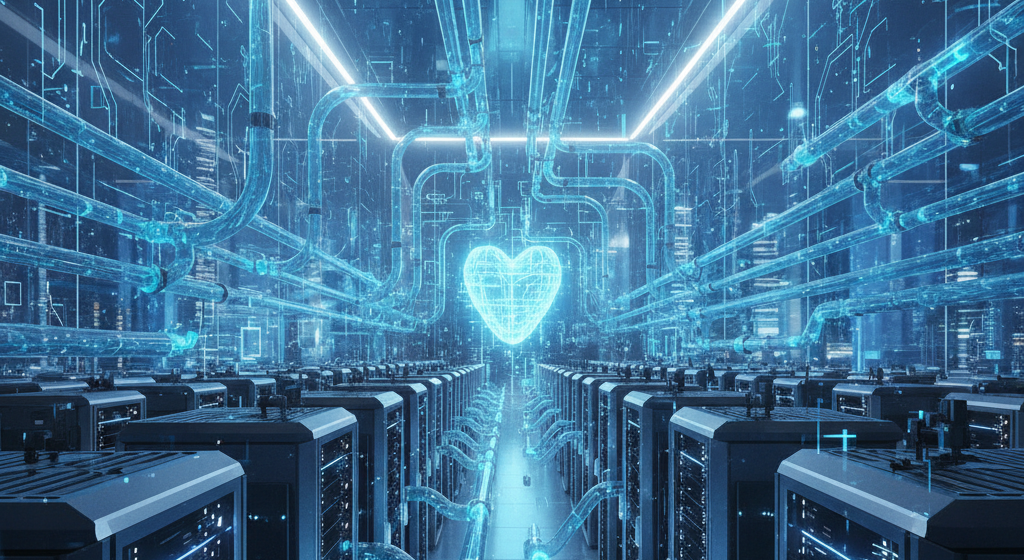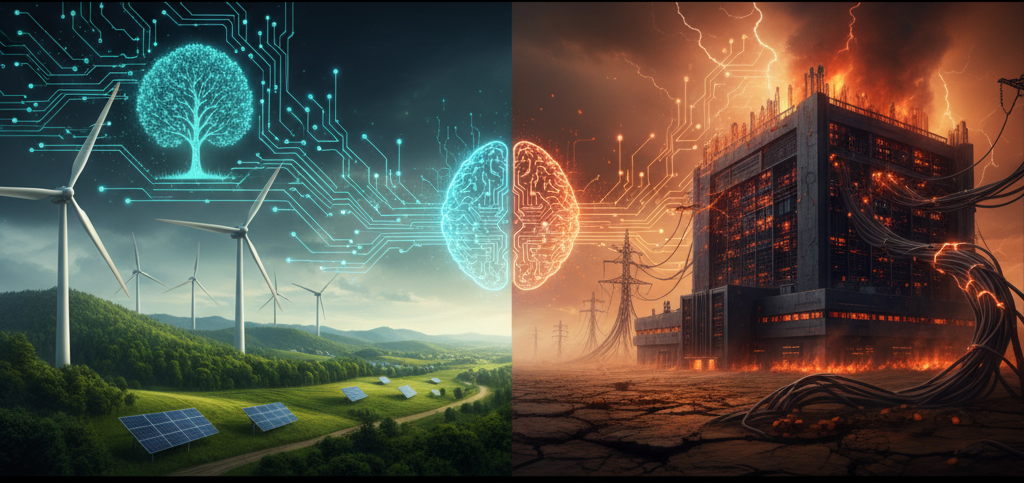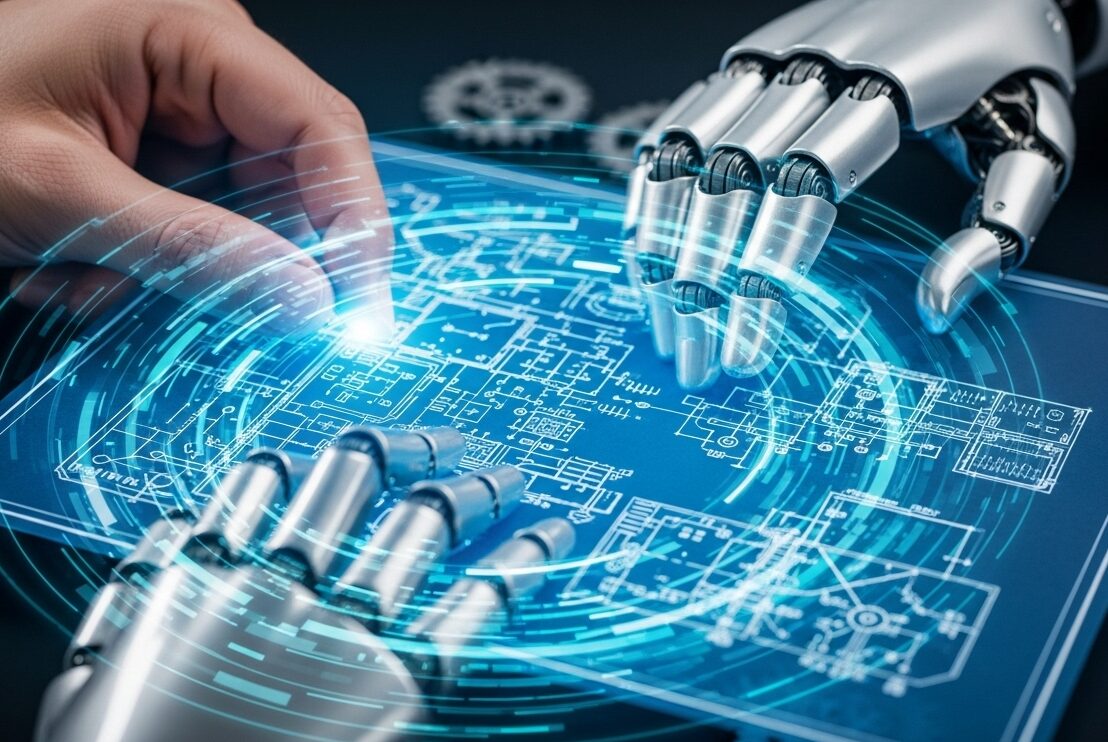Walk into an old-school data center in your imagination: long, sterile rows of server racks, humming quietly under fluorescent lights, each one blinking with a polite green LED. It feels clinical, like a library of hard drives—orderly, silent, and a little lifeless.
Now fast-forward to today. Step inside a modern AI data center, and you’re not in a library anymore—you’re in the throbbing engine room of the AI revolution. This isn’t just where data lives. It’s where data thinks.
Beyond Storage: From Filing Cabinets to Thinking Engines
In the past, data centers were built to store information, like giant digital filing cabinets. But artificial intelligence has rewritten their purpose. Today’s AI data centers are more like colossal brains, designed not just to hold information but to process it, connect it, and learn from it in real time. Every recommendation you see on Netflix, every chatbot answer you get, every image an AI tool generates—behind all of it, these machines are grinding away, translating raw electricity into intelligence.
The GPUs Have Left the Building
At the core of this transformation lies a shift in hardware. For decades, CPUs—the central processing units—did the heavy lifting. They were like master artisans, carefully painting each brushstroke of a digital portrait. But AI doesn’t need one artist—it needs armies. Enter GPUs, TPUs, and other AI accelerators. These specialized processors work in vast parallel, more like thousands of 3D printers sculpting a massive, intricate model at once.
It’s this parallelism that makes training a model like GPT or powering an image generator possible. A CPU could, in theory, do it—but you’d be waiting lifetimes. GPUs made it practical.
The Thirst for Power: The Kilowatt Elephant in the Room
But brilliance has a price. The new AI data center gulps electricity like a marathon runner gasping for air. The processors themselves devour megawatts, but the real challenge is cooling them down. Rows of GPUs can reach temperatures hotter than jet engines. Air cooling alone can’t cut it.
That’s why the industry is racing to reinvent cooling. Liquid immersion baths, direct-to-chip cooling systems, even siting data centers beside hydroelectric dams—these aren’t luxuries, they’re necessities. It’s a quiet arms race between rising demand for AI and the physics of keeping these digital furnaces alive.
The Invisible Architecture of Software
Of course, hardware is only half the story. The orchestration layer—the invisible software scaffolding—keeps the whole organism alive. Imagine trying to choreograph a million dancers on a stage, each with a different routine, without a single collision. That’s the job of platforms like Kubernetes, operating at planetary scale. These systems juggle workloads, reroute failures, and squeeze efficiency from every watt of energy and every cycle of computation.
The Human Element
And behind all this? People. Teams of engineers, data scientists, network architects, and efficiency experts—an unsung army of technologists. Their work is part science, part art, as they tune algorithms, redesign cooling, and orchestrate the digital ballet happening inside. These centers may feel mechanical, but human ingenuity is the pulse that keeps them alive.
Looking Forward: The Next Evolution
So, where does this go next? The horizon is already shimmering with possibilities: quantum computing may someday weave its way into these centers; specialized silicon is becoming more refined with every generation; and sustainability pressures are driving innovations that blur the line between physics and computing.
The AI data center is not a static monument—it’s the fastest-evolving species in the technology ecosystem. Every generation looks radically different from the last, each one hungrier, more powerful, and more efficient.
The Backstage Pass
If AI tools like ChatGPT and Midjourney are the performers on stage, then the modern data center is the beating heart backstage, pumping lifeblood into every interaction. Understanding this hidden infrastructure doesn’t just demystify the magic—it makes the scale of human achievement clearer.
Next time you marvel at an AI-generated image or a flawless chatbot answer, remember: somewhere, in a vast warehouse filled with whirring processors and shimmering coolant pipes, the engine of intelligence is roaring to life.




